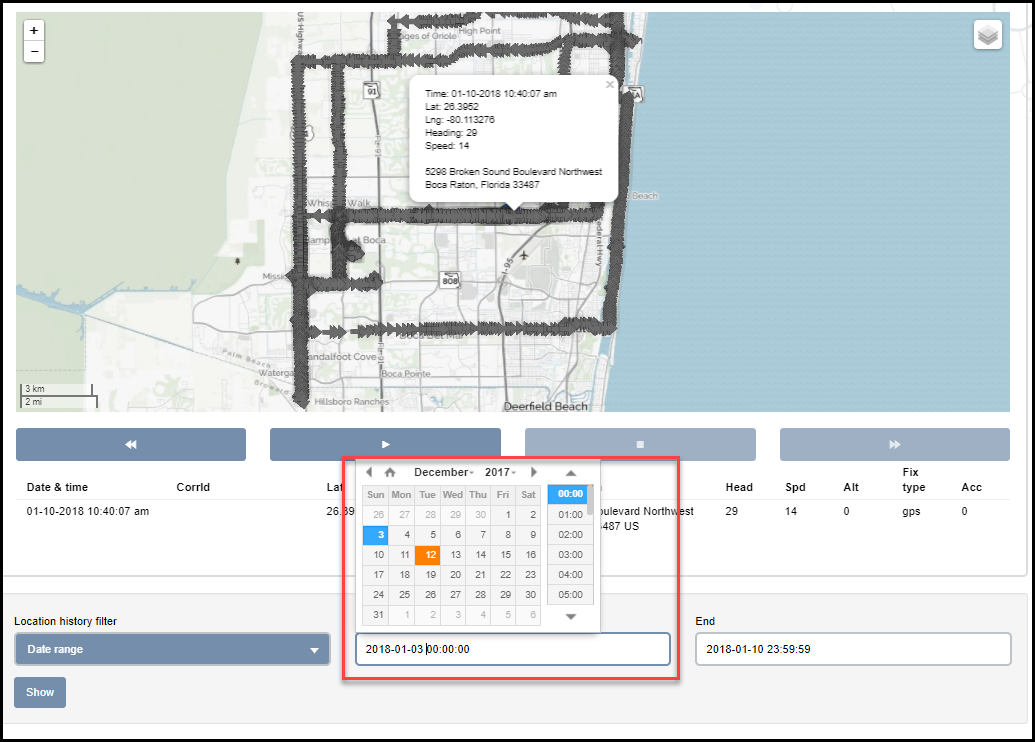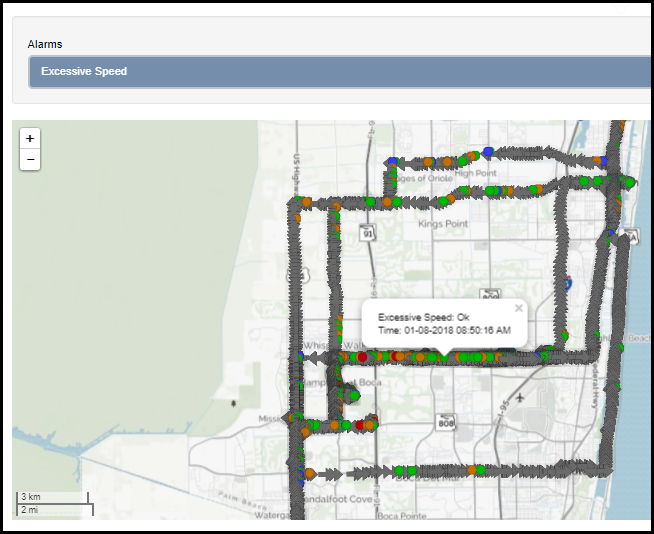To view location history of a Thing, do the following:
- On the Overview tab while Viewing a Thing, click on
History

Location history screen appears with 7 days of history. It also displays the present location information. - Modify the date range to get the desired history. To modify click on the Start/End date to open the date selector to select the desired date.

The map tab shows the movement history of the Thing for the Date Range in the form below it. The last known position is initially highlighted on the map and its information in the table below the map.
Besides Date Range, under the Location History Filter dropdown there is the Number of Records option. After selecting this second option, the user can flag the Maximum Records option or type in the box "Location records limit"..png)
- In the Map tab, click on the
Previous and Next buttons to iterate through the historical records. While toggling through the history records the high-lighted position will change and the information in the table below the map will change to match.

- Click on the Play button to automatically iterate through the Thing location history. While automatically iterating through the location history, clicking any of the other buttons will stop the playback: The
Stop button will stop on the current location history, the
Previous button will display the preceding record, and the Next button will display the next record. If any alarms were triggered at the location, the arrow displayed will match the color of the alarm. Hovering the mouse over the location will display information about the alarm that was triggered.
- Selecting an alarm will show corresponding markers for when alarms took place. To select an alarm, click on the Alarms drop-down and select an alarm.

- Click on the Table tab to see the date range of the location history in the form of a table

Click on the Download CSV to download the information as a CSV file.The Delta column shows the distance from the previous published location, in meters. Any locations that are published for a Thing for dates that are between existing location publishes will show zero for the delta value, and the surrounding locations will not have their delta values recalculated.
- Click on the Geofence history tab to see the list of the Geofences crossed by the Thing along with the duration of the thing inside the Geofence.

Click on the Download CSV to download the information as a CSV file. - Click on a Geofence name to view the Geofence.
If you face issues detecting small movements, this might be a direct consequence of the Debounce value. The debounce value is a number (in meters) used to determine if the location publish should be suppressed to avoid drifting in a small area due to inaccuracies in the location provider. The default value is 50 meters if this is not specified, indicating that if the location published is less than 50 meters from the previous location, then it will be ignored. Set to 0 to disable debouncing completely, or set it to a distance of your preference..